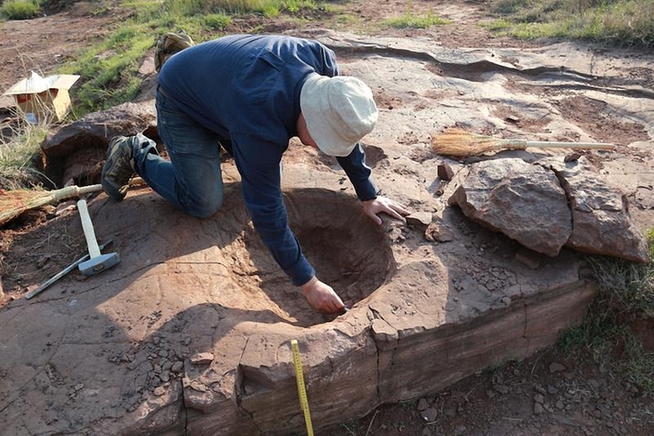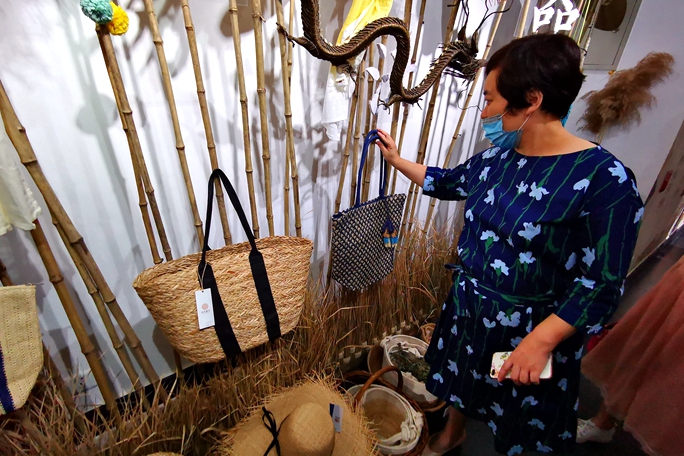Footprints tell a story: These dinosaurs were social
Four parallel paths of dinosaur footprints - which include 70 footprints of a small type of didactyl (a two-toed dinosaur) called Deinonychus - provide the first evidence that the creatures lived in groups, according to an article published in Cretaceous Research on Monday.
Authors of the article were from China, the United States, Canada, Australia, South Korea and Germany.
The four parallel sets of footprints represent some of the more than 300 dinosaur footprints found at a 6,000-square-meter site in Lizhuang village of Tancheng county, Linyi city, Shandong province.
"With each footprint about 8 centimeters long, the four parallel sets of tracks are a typical sign that the dinosaurs traveled together, which suggests some sort of social group," said Xing Lida, a dinosaur footprint expert at Beijing's China University of Geosciences and the lead author of the article.
"Before, Deinonychus footprints were usually made by one dinosaur, making the experts question films such as Jurassic World that depict Deinonychus living in groups," Xing said. "But the new discovery at Lizhuang village appears to put an end to the question."
Deinonychus, a genus of birdlike carnivorous dinosaur, are believed to have lived during the early Cretaceous Period, about 115 million to 108 million years ago.
Xing and his teammates began conducting field studies on the footprints at Lizhuang village in April last year, after Tang Yonggang, a member of the team, found a group of tracks near a man-made pond there in 2015.
"Footprints can help paleontologists find detailed information, including the dinosaurs' weight, speed of movement and number," Xing said.
"The diversity in the site is also remarkable. Footprints of seven species of dinosaurs and birds, including both meat-and plant-eating ones, were found together," Xing said, noting that usually only one or two dinosaur species can be found at a site.
"No dinosaur bone fossils have ever been found at the site, so footprints are important for us to know what kind of dinosaurs had lived here," said Wang Xiaoli, the head of the Institute of Geology and Paleontology at Linyi University.
"Though the site has no protection now, it is well-preserved. In the next step, we will work with government organizations to see how to protect the site," Wang said.
Dinosaur footprints are normally protected and require ventilation and drainage. Digital models are often made, which allow the footprints to be recreated using 3-D printers in case they later suffer damage, Xing said.
About 250 kilometers north of Lizhuang, the Huanglonggou site in Zhucheng county of Weifang, Shandong province, presents more than 3,000 dinosaur footprints in a 2,600-square-meter area that is now under protection.
Wang said a single dinosaur footprint is seldom sold, but the sale of dinosaur skeletons have become a specialized business.
A 9-meter-long skeleton of an unidentified type of dinosaur, believed to be a species not yet catalogued, fetched more than $2.3 million at an auction in Paris on June 4, Reuters reported.
zhaoruixue@chinadaily.com.cn
|
 A researcher puts marks around a dinosaur footprint in Tancheng county, Shandong province, on Monday.Provided To China Daily |

 Shandong Culture and Tourism Consumption Season
Shandong Culture and Tourism Consumption Season Culture, tourism sectors pick up in Shandong as epidemic wanes
Culture, tourism sectors pick up in Shandong as epidemic wanes

